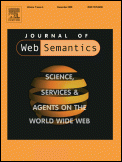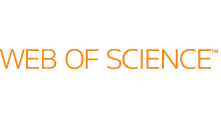
Computing is any goal-oriented activity requiring, benefiting from, or creating computing machinery. It includes the study and experimentation of algorithmic processes, and development of both hardware and software. Computing has scientific, engineering, mathematical, technological and social aspects. Major computing disciplines include computer engineering, computer science, cybersecurity, data science, information systems, information technology and software engineering.

Computer science is the study of computation, information, and automation. Computer science spans theoretical disciplines to applied disciplines. Though more often considered an academic discipline, computer science is closely related to computer programming.

Enterprise resource planning (ERP) is the integrated management of main business processes, often in real time and mediated by software and technology. ERP is usually referred to as a category of business management software—typically a suite of integrated applications—that an organization can use to collect, store, manage and interpret data from many business activities. ERP systems can be local based or cloud-based. Cloud-based applications have grown in recent years due to information being readily available from any location with Internet access. Traditional on-premises ERP systems are now considered legacy technology.
Software engineering is an engineering-based approach to software development. A software engineer is a person who applies the engineering design process to design, develop, maintain, test, and evaluate computer software. The term programmer is sometimes used as a synonym, but may also refer more to implementation rather than design and can also lack connotations of engineering education or skills.
An information system (IS) is a formal, sociotechnical, organizational system designed to collect, process, store, and distribute information. From a sociotechnical perspective, information systems are composed by four components: task, people, structure, and technology. Information systems can be defined as an integration of components for collection, storage and processing of data of which the data is used to provide information, contribute to knowledge as well as digital products that facilitate decision making.

Theoretical computer science (TCS) is a subset of general computer science and mathematics that focuses on mathematical aspects of computer science such as the theory of computation, lambda calculus, and type theory.
Analytics is the systematic computational analysis of data or statistics. It is used for the discovery, interpretation, and communication of meaningful patterns in data. It also entails applying data patterns toward effective decision-making. It can be valuable in areas rich with recorded information; analytics relies on the simultaneous application of statistics, computer programming, and operations research to quantify performance.
Software as a service is a software licensing and delivery model in which software is licensed on a subscription basis and is centrally hosted. SaaS is also known as on-demand software, web-based software, or web-hosted software.
The IEEE Transactions on Software Engineering is a monthly peer-reviewed scientific journal published by the IEEE Computer Society. It was established in 1975 and covers the area of software engineering. It is considered the leading journal in this field.

Open science is the movement to make scientific research and its dissemination accessible to all levels of society, amateur or professional. Open science is transparent and accessible knowledge that is shared and developed through collaborative networks. It encompasses practices such as publishing open research, campaigning for open access, encouraging scientists to practice open-notebook science, broader dissemination and engagement in science and generally making it easier to publish, access and communicate scientific knowledge.

The Journal of Web Semantics is a bimonthly peer-reviewed scientific journal published by Elsevier. It covers knowledge technologies, ontology, software agents, databases and the semantic grid, information retrieval, human language technology, data mining, and semantic web development. The journal is abstracted and indexed by Scopus and the Science Citation Index. According to the Journal Citation Reports, the journal has a 2020 impact factor of 1.897.

The Web of Science is a paid-access platform that provides access to multiple databases that provide reference and citation data from academic journals, conference proceedings, and other documents in various academic disciplines. It was originally produced by the Institute for Scientific Information. It is currently owned by Clarivate.

In the pursuit of knowledge, data is a collection of discrete values that convey information, describing quantity, quality, fact, statistics, other basic units of meaning, or simply sequences of symbols that may be further interpreted. A datum is an individual value in a collection of data. Data is usually organized into structures such as tables that provide additional context and meaning, and which may themselves be used as data in larger structures. Data may be used as variables in a computational process. Data may represent abstract ideas or concrete measurements. Data is commonly used in scientific research, economics, and in virtually every other form of human organizational activity. Examples of data sets include price indices, unemployment rates, literacy rates, and census data. In this context, data represents the raw facts and figures which can be used in such a manner in order to capture the useful information out of it.
Algorithmica is a monthly peer-reviewed scientific journal focusing on research and the application of computer science algorithms. The journal was established in 1986 and is published by Springer Science+Business Media. The editor in chief is Mohammad Hajiaghayi. Subject coverage includes sorting, searching, data structures, computational geometry, and linear programming, VLSI, distributed computing, parallel processing, computer aided design, robotics, graphics, data base design, and software tools.

Willibrordus Martinus Pancratius van der Aalst is a Dutch computer scientist and full professor at RWTH Aachen University, leading the Process and Data Science (PADS) group. His research and teaching interests include information systems, workflow management, Petri nets, process mining, specification languages, and simulation. He is also known for his work on workflow patterns.
The Journal of Software: Evolution and Process is a peer-reviewed scientific journal covering all aspects of software development and evolution. It is published by John Wiley & Sons. The journal was established in 1989 as the Journal of Software Maintenance: Research and Practice, renamed in 2001 to Journal of Software Maintenance and Evolution: Research and Practice, and obtained its current title in 2012. The editors-in-chief are Massimiliano Di Penta, Darren Dalcher, Xin Peng, and David Raffo.
In computer science, in-memory processing is an emerging technology for processing of data stored in an in-memory database. In-memory processing is one method of addressing the performance and power bottlenecks caused by the movement of data between the processor and the main memory. Older systems have been based on disk storage and relational databases using SQL query language, but these are increasingly regarded as inadequate to meet business intelligence (BI) needs. Because stored data is accessed much more quickly when it is placed in random-access memory (RAM) or flash memory, in-memory processing allows data to be analysed in real time, enabling faster reporting and decision-making in business.
Information technology (IT) is the use of computers to create, process, store, retrieve and exchange all kinds of data and information. IT forms part of information and communications technology (ICT). An information technology system is generally an information system, a communications system, or, more specifically speaking, a computer system — including all hardware, software, and peripheral equipment — operated by a limited group of IT users.
Semantic Web - Interoperability, Usability, Applicability is a bimonthly peer-reviewed scientific journal published by IOS Press. It was established in 2010 and covers the foundations and applications of semantic web technologies and linked data. The journal uses an open peer-review process. The journal publishes its metadata online in the form of Linked Data and provides scientometrics such as the geographic distribution of authors, citation networks, trends in research topics over time, and so forth. The editors-in-chief are Pascal Hitzler and Krzysztof Janowicz.
Open source is source code that is made freely available for possible modification and redistribution. Products include permission to use the source code, design documents, or content of the product. The open-source model is a decentralized software development model that encourages open collaboration. A main principle of open-source software development is peer production, with products such as source code, blueprints, and documentation freely available to the public. The open-source movement in software began as a response to the limitations of proprietary code. The model is used for projects such as in open-source appropriate technology, and open-source drug discovery.








